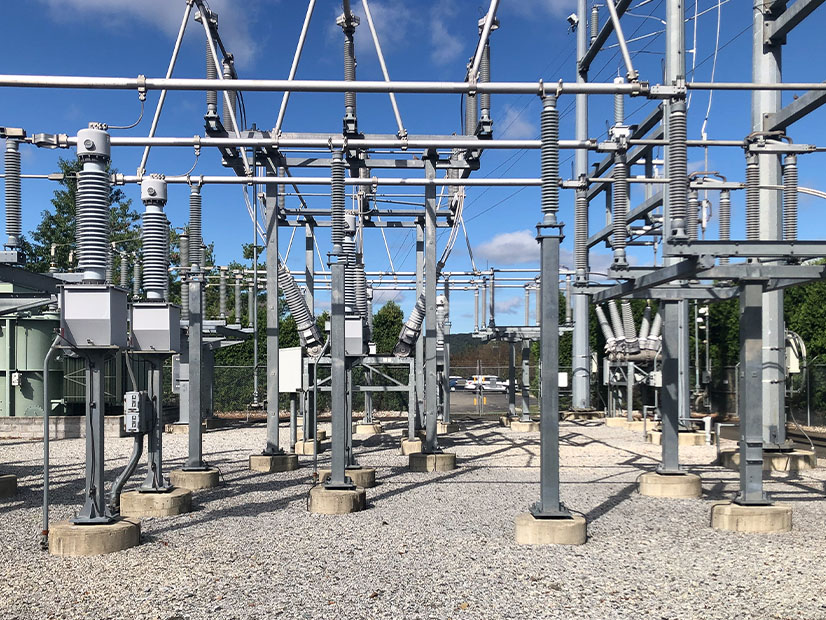New York is ordering electric utilities to plan for expected future demand from the clean energy transition and identify urgent infrastructure needs that already exist.
The Public Service Commission on Aug. 15 ordered “proactive planning for upgraded electric grid infrastructure” (Case 24-E-0364) with hopes of meeting the increasing loads created by electrified buildings and battery-powered transportation.
New York and its electric utilities have anticipated and planned for much higher electric use for most of a decade. But it often has been a top-down process that can move much more slowly than load grows. So, a bottom-up approach that is more granular — and hopefully much faster — is being added.
The state’s six major investor-owned electric utilities are directed to collaborate to develop two filings: a proposal for proactively planning to meet the future needs of transportation and building electrification and a proposal identifying urgent needs that may need to be met before the process detailed in the first proposal can be put into motion.
Heat pumps and electric vehicle chargers can be ordered and installed in a matter of weeks or months, but an upgrade to the utility infrastructure supporting them can take more than seven years to move from concept to completion.
The order seeks to narrow this gap, and also to create a unified planning process across the utilities to reduce the chance of infrastructure upgrades being redundant, insufficient or misaligned across utility territories.
This new bottom-up process is intended to complement the Coordinated Grid Planning Process (CGPP) created in August 2023 (Case 20-E-0197), which involves the same utilities but is more suited to a top-down focus on high-voltage transmission, the order explains.
The utilities are directed to recommend whether this new proactive process can formally integrate with the CGPP and, if so, how.
When Schuyler Matteson, clean energy planning lead at the Department of Public Service, completed his presentation on the proposed order, PSC Chairperson Rory Christian said, “I want to clarify something in case some are left with the impression we just figured this out. We did not. In fact, this particular proceeding has been quite some time in development.”
Some of the PSC cases on which this new process is built date back almost a decade, Christian added. “We’ve known this problem was coming.”
Commissioner John Maggiore asked, “Why haven’t we done this already?”
Matteson explained how it took so long, rather than why: Some groundwork already was in place, but the PSC’s July 2020 electric vehicle make-ready order really began the process by which staff “identified some significant differences between planning for transportation loads versus traditional electric system planning and how there was some conflicts there in the ways the loads show up and how to plan for those loads.”
Commissioner Uchenna Bright asked if the rate of electrification of buildings and vehicles had accelerated and if the state is trying to be more strategic about infrastructure investments in response.
“I think that’s exactly right,” Matteson said. “We had fairly stable both peak and average load growth over the last five or 10 years. But as we see fleets responding to both our policies and national policies, we see large, very chunky popcorn-type loads popping up around the state that might be 5, 10, 20 megawatts at a time, which is a very significantly sized load.” Sales of individual electric vehicles and heat pumps add to the load, he said.
Commissioner Denise Sheehan said she thought coordinating the new proactive process with the existing CGPP would be essential. She asked about the economic development potential.
“I would say there’s a couple of ways it’s implicated,” Matteson replied, noting the number and variety of new load requests coming in and the different approaches to meeting them.
“So, a lot of the largest types of loads, the 50-, 100-MW-plus loads that might be coming into the system, they’re likely to be captured under the Coordinated Grid Planning Process, because they often have transmission-level interconnections,” he said.
“But to the extent that we do see significant adoption of new loads coming on of the system on the distribution network, those will have to be incorporated into the distribution scale load forecast that the utilities will use to identify these infrastructure planning upgrades.”
Commissioner Radina Valova said her main concern in considering the draft order had been whether the loads utilities projected actually would materialize.
“Will the commission have the opportunity to review the utilities’ proposed forecasting methodologies,” she asked, “including their underlying inputs and assumptions, the methodologies that they will use specific to the proactive planning process?”
Matteson replied that it’s important to fill the gap “that we think exists right now in terms of really granular, longer-term forecasting for EVs and building electrification.”
As part of the filing that’s requested, 120 days from now, utilities will propose “those different load forecasts, those planning methodologies.” That allows time to evaluate utility proposals, and in “the actual development process of the planning framework, we expect to have some more back-and-forth with the utilities on specifically what data sets are most relevant here.”
Commissioner David Valesky also asked about the commission’s role going forward.
The PSC will be involved repeatedly and soon, Matteson said.
“We heard about a couple of [urgent projects] through our stakeholder process and through the technical conferences where National Grid and Con Edison have already identified projects that may need to enter construction within the next year or so, so those urgently needed projects would come within about 90 days, and then we’d be able to evaluate the need to fund those projects,” he said.
The commission approved the order with a 6-0 vote.



